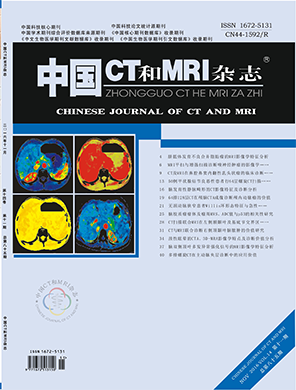Head and Neck Imaging
The Feasibility Study of 3.0TMR Dacryocystography of Whole Lacrimal Passages*
Author:GUO Xue-jun, GAO Min, QI Yu-long, et al
affiliation:Department of Radiology, Peking University Shenzhen Hospital, Shenzhen 518036, Guangdong Province, China
PDFAbstract
Objective To explore the feasibility of MR dacryocystography of whole lacrimal passages, and to optimize the scanning scheme. Methods Thirty healthy volunteers without any eye diseases (60 lacrimal passages) were selected and underwent MR dacryocystography. The bilateral conjunctival sacs were instilled by sodium hyaluronate eye drops before the examination. By carotid coil, 30 cases were scanned with 3D-CISS, 3D-SPC and 2D-TSE sequence, and 8 of 30cases with extra 3D-DE scan and 3D-ME sequence. Every components of lacrimal passages were observed by analyzing the original images and maximum intensity projection (MIP) in different sequences. Results 3DCISS, 3D-SPC and 2D-TSE sequence can reveal the components of whole lacrimal passages, but contrast and the signal-to-noise ratio of the images in 2D-TSEsequence are better than others. The display rate of every component of the lacrimal passages can reach to about 100%, and more than 80% in 3D-SPC sequence. Conclusion The method The perfect andnon-invasive MR dacryocystography of whole lacrimal passages can be come true by combining high resolution carotid coil and sodium hyaluronate eye drops. The 2D-TSE sequence can be used to optimize the sequence of MR dacryocystography of whole lacrimal passages, and 3D-SPC sequence can be used as a supplemental sequence.
【Keyword】Lacrimal Passage; MR Dacryocystography
【Chart number】R777.2+1
【Document Identification Number】A
【DOI】 10.3969/j.issn.1672- 5131.2016.11.001
Chinese journal of CT and MRI
th14Volume, th 11 Issue
2016Year11Month

Related articles